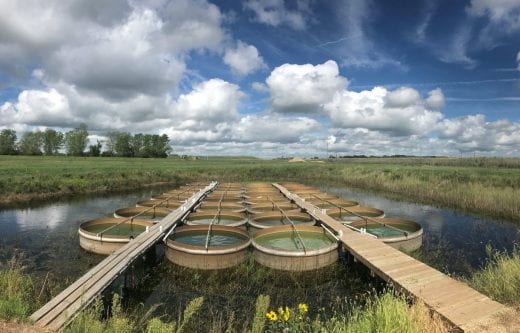
The causes of cyanobacterial blooms and cyanotoxin production are yet to be fully elucidated. Researchers on this project experimentally tested the effects of different nutrient limitation regimes and nutrient forms on phytoplankton community composition and cyanotoxin concentrations in 18 large-scale mesocosms inoculated with Milford reservoir water at the University of Kansas Field Station for 21 days. Mesocosms were fertilized with one of six nutrient treatments.

Preliminary results indicate that nutrient loading amendments were successful at creating substantially different nutrient regimes in the large-scale mesocosms. After initial amendments, P-limited and control mesocosms had an average TN:TP ratio >30 whereas N-limited mesocosms averaged <10 (by mass). Phytoplankton biomass was substantially larger in N-limited mesocosms compared to P-limited and control mesocosms by day 21; “surface scums” formed only on tanks fertilized with N and P. Microcystin was detected in all treatments and was highest in mesocosms where N and P were added. Overall, preliminary results show that N and P act synergistically to form surface scums and produce toxins.
Contact: Ted Harris, Kansas Biological Survey